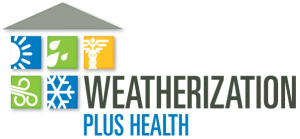June 30th marks the end of National Healthy Homes Month 2017 and we wanted to bring you an update on the Weatherization Plus Health Initiative in Washington State. See the guest blog below from the staff at the Washington Department of Commerce. This is a follow up to two other State of Poverty Blog posts on this program from April and October 2016. For more info on Weatherization Plus Health in Washington, visit the Washington WAP website. Also see another Healthy Homes blog post from Washington DOC earlier this month.

In earlier blogs postings we described our plans to implement a pilot Weatherization Plus Health program that combined energy efficiency with home health environment improvements for low-income households struggling with asthma and COPD.
In June 2017, we are now nearing the end of 16-month pilots at eight locations around the state that have been testing diverse models of community health partnerships. We’ve been on a steep and fast-paced learning curve, which has helped us build working relationships with community health workers, Public Health Departments, Asthma Clinics, and hospitals in a short period of time. Over the rest of the summer, we will be working with the Washington State Energy Program to evaluate our model approaches, analyze early results, and document the work we have accomplished.
Here are some of the things we’ve seen and learned:
- New program structures take time to build, especially if they involve creation of new working relationships.
- Frequent communication with pilot agency program staff is important to understand challenges being faced on the ground, and to be able to adapt program structure.
- It is essential in a new pilot program like Weatherization Plus Health to cultivate local, highly motivated champion(s) and empower them to act.
- Spending limits for installed health improvement measures need to be carefully designed and clearly communicated to achieve both cost-effectiveness and flexibility.
- Some standardization of assessment tools, protocols, and documents could save time and effort in a pilot, even if you are testing different models of service.
- It is possible to see health improvements in your clients, even in a short period of time, if your health assessments and measures are based on what has already been documented to be effective.
- Efforts to tie in with local/state-wide health system planning structures can position your program for future partnerships and support. (In Washington, these are the Accountable Communities of Health, and the Medicaid Waiver structures)
- It’s never too early to think about how to move a pilot effort to the next steps toward an efficient, sustainable, permanent service.
While we already have strong anecdotal evidence consistently from clients of health improvements we plan to more formally analyze impacts of our work through a formal evaluation that will be completed later in the year.
For more information on Weatherization Plus Health, contact Hans Berg, Weatherization Leverage Manager, Washington State Department of Commerce, hans.berg@commerce.wa.gov, (360) 725-2961.





